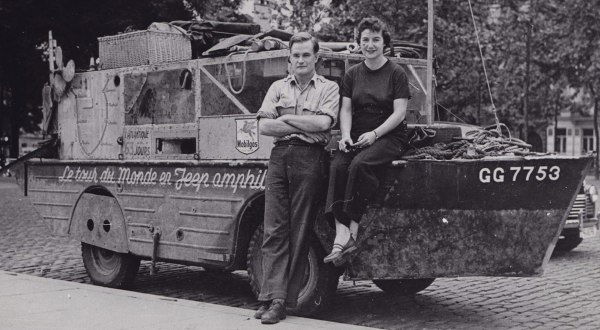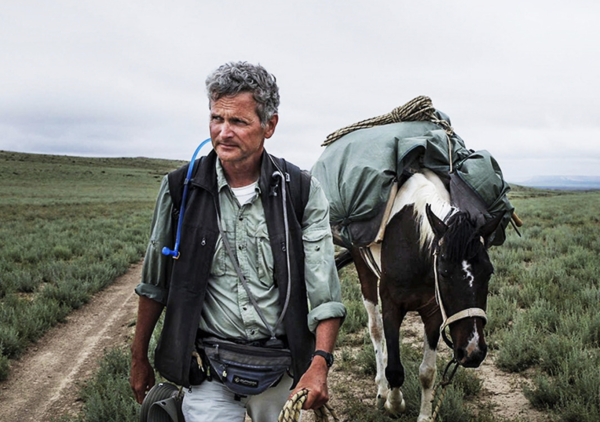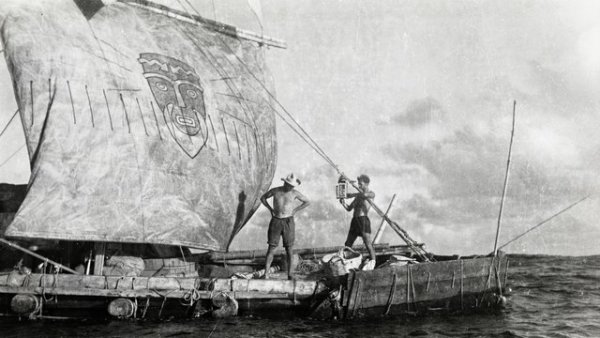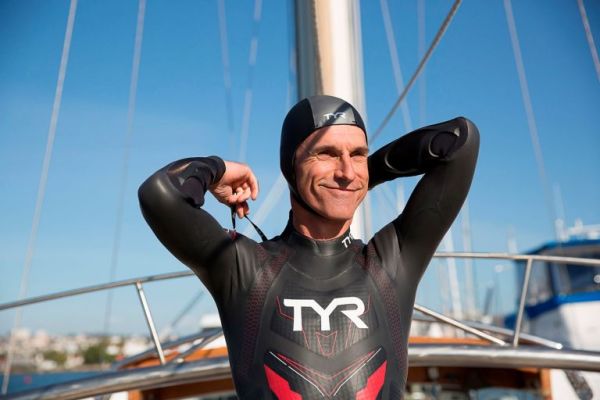He was one of the youngest ever to traverse both poles, his expedition nearly the fastest to cross Antarctica.
In 2010 he constructed a boat of reclaimed plastic bottles, dubbed “Plastiki” and sailed it from San Francisco to Sydney.
His Sundance Channel show Eco Trip provided an honest look into how the lives we live affect our environment.
David Mayer de Rothschild is certainly not short on epic adventures or impact. But the legendary British environmentalist, explorer and founder of eco-conscious sustainable skincare brand The Lost Explorer, didn’t become a legend without a touch of inspiration. Here’s a look into five explorers that inspired him.
Ben Carlin, Half-Safe

In 1958, Australian explorer Mr Ben Carlin set out in a modified jeep to become the first and only person to circumnavigate the entire globe in an amphibious craft (his wife joined him for most, but not all, of the journey). “He’s just an unexpected adventurer,” Mr de Rothschild says. “I mean, he bought this Jeep right after the war and somehow managed to persuade his wife that she should join him. Google ‘Half-Safe’ and you’ll see this tiny little Jeep, barely above the water line, driving out of New York Harbor and you’re like, ‘What the…?’ I’m actually quite interested in doing the same thing that he did. I like the idea of having an amphibious vehicle that goes over land and sea that’s only using clean energy. That was Half-Safe.”
Paul Salopek, the “Out of Eden Walk”

In January 2013, two-time Pulitzer Prize-winning American journalist Mr Paul Salopek set out on the seven-year-long “Out of Eden Walk”, tracing humanity’s own first journey. Now nearing the end of the walk, he has covered almost all of the more than 20,000 miles from Ethiopia up across the Middle East and Asia, over the land bridge to Alaska and all the way down the west coast of the Americas to the tip of Chile. “It’s mental,” says Mr de Rothschild. “And it’s so beautiful because it’s a seven-year commitment. And it’s truly back to our roots. It’s very basic. It’s very primal. It’s walking. It’s nomadic. It’s cultural. It’s shifting. It’s moving… but at a really beautiful pace.”
Sir Wally Herbert, British Trans-Arctic Expedition

In 1968 Sir Walter “Wally” William Herbert embarked on a perilous 464-day journey to become the first man to be given full credit for walking across the North Pole. “The Apollo 11 mission was 50 years ago this year,” Mr de Rothschild says. “And, at the same time we were landing on the moon, Wally was walking across the North Pole. I think that’s pretty cool. He went from north to south, from Barrow in Alaska down to Spitsbergen in Norway. And there was ice then, so you could kind of walk from coast to coast, and he went with his dogs, but he had to overwinter at the North Pole, which is incredible. I mean, the fact that he stayed there – he built a shed and actually stayed on the ice, and then continued his journey – it’s just phenomenal.”
Thor Heyerdahl, Kon-Tiki

In 1947, Norwegian explorer Thor Heyerdahl sailed from Peru to Polynesia to demonstrate the migration path of early peoples. His book about the experience was a major influence on Mr de Rothschild’s Plastiki. “I’ve always had an affinity with the early guys because they were the forbearers,” says Mr de Rothschild says, “and when they were doing it, there was no Gore-Tex. There were no satellite telephones, no modern safety net; if there was a real problem he didn’t just pick up a phone and call in a helicopter to come and get him, you know? On the Kon-Tiki, when they left, they left. They sailed off into the horizon and that was it. You either made it back or you didn’t. It was Thor Heyerdahl’s mission to articulate that a migratory route going across the Pacific was possible because of currents, and he did it. I think there was such a purity to that mission.”
Benoît Lecomte, the Longest Swim

This June, Benoît Lecomte took to the water to begin his 5,500-mile swim across the Pacific Ocean, a journey that will take him eight hours a day over six months. “The swim is beautiful, over a long period of time,” says Mr de Rothschild. “And it has a wow factor, which in today’s day and age you need to get people’s attention. If you can understand nature, you can start to learn and understand humanity. And then you can start to respect it, and protect it. Originally, a lot of exploration was obviously a search for resources. Somewhere along the line that shifted to being the fastest to climb this mountain, the first to skate across that ice cap or something. But I think now, more than ever, we’ve got an opportunity to take our time.“
Source: Mr Porter















